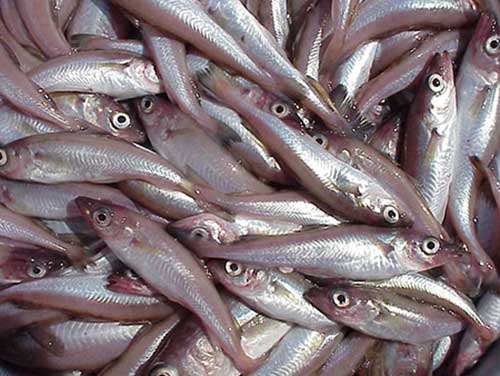
Big Increase in Bering Sea Pollock Survey Abundance Estimates Reported
September 30, 2014
However, fishery managers note that the boost in biomass does not necessarily mean a significant increase in total allowable catch for 2015 because of the two million metric ton cap on all species of groundfish harvested annually in the Bering Sea. That cap usually results in a maximum total allowable catch of about 1.3 million metric tons for pollock.
Juvenile pollock
The bottom-trawl survey index for pollock was the second highest biomass since this standard survey began in 1982 and is 55-percent higher than the average. This survey appears to indicate more than one strong year-class. The 2008 cohort, as seen last year with near record age 5 abundance estimates, was a major component along with the 2006 and 2010 year classes. The acoustic-trawl survey found significant concentrations of mid-water pollock (fifth highest in the time series since 1982 and 23-percent above the average). In particular, concentrations in the southeast portion of the eastern Bering Sea were found that have been largely absent since 2004. Also noteworthy was the large number of observations of 2 year-old pollock. "This survey provides an important index of pre-recruit pollock," said Jim Ianelli, NOAA’s chief pollock stock assessment scientist at the AFSC. "If the 2012 year class continues to remain strong, conditions bode well for the ecosystem and fishery in the near term." Ianelli notes that conditions this summer were warmer than average, which may play a role in future recruitment and may affect concentrations and the distribution of pollock. The North Pacific Council Groundfish Plan Team meetings are held each fall to review fishery stock assessment data gathered by NOAA Fisheries scientists during the summer survey season. The preliminary information is then processed and analyzed, for incorporation into an integrated stock assessment for a Groundfish Plan Team meeting in November. After that, the stock assessments are presented to the Council’s Science and Statistical Committee for technical review, and then to the Council at its meeting in early December. The Council considers the information when setting the total allowable catch for 2015.
|
||
